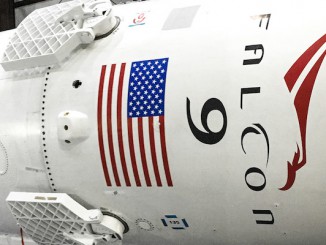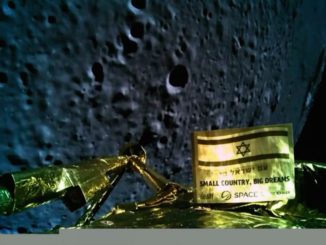
NASA has awarded SpaceX a $109 million contract to launch the Interstellar Mapping and Acceleration Probe, a NOAA space weather observatory, a robotic scout to map water on the moon, and two other ridealong payloads on a single Falcon 9 rocket from Cape Canaveral in 2024.
The rideshare mission’s primary passenger is IMAP, a probe heading for an observing post nearly a million miles (1.5 million kilometers) from Earth in the direction of the sun at the L1 Lagrange point. IMAP’s instruments will study the boundary between the heliosphere — where the sun’s influence reigns — and the region between the stars known as interstellar space.
NASA considered launchers from SpaceX and United Launch Alliance for IMAP. The agency announced Friday that a Falcon 9 rocket will boost the IMAP spacecraft toward its distant operating orbit at L1, a gravitational balance point between the Earth and the sun.
IMAP’s launch is scheduled for October 2024 from pad 40 at Cape Canaveral Air Force Station, according to NASA. The space agency said the value of the contract with SpaceX is $109.4 million, including “the launch service and other mission related costs.”
Fitted with 10 instruments, IMAP will map the outer reaches of the heliosphere, where particles blown outward by the solar wind run into winds from other stars. The boundary, located about 10 billion miles from the sun, shields Earth and the rest of the planets from harmful cosmic rays.
Some of IMAP’s instruments will sample neutral particles from interstellar space that make it into the heliosphere, along with interstellar dust particles. In addition to probing the collision between the sun’s winds and materials from other stars, IMAP will also study the fundamental processes that accelerate particles throughout the heliosphere, and beyond, according to the Johns Hopkins University Applied Physics Laboratory, which is developing the mission and building the spacecraft for NASA.

The IMAP mission is cost-capped at $564 million, excluding the cost of launch services. The launch contract NASA signed with SpaceX will push the mission’s total cost to NASA to nearly $700 million.
Although IMAP is the prime payload on the Falcon 9 launch in October 2024, the spacecraft will not fill the rocket’s lift capacity.
A satellite being developed by NOAA to monitor space weather will company IMAP into space. Like IMAP, NOAA’s Space Weather Follow On-Lagrange 1, or SWFO-L1, mission will head to an observing post around the L1 Lagrange point nearly a million miles from Earth.
The SWFO-L1 mission will monitor the solar wind and detect solar flares that could threaten Earth with disruptions in communications, satellite navigation, spaceflight operations, and electrical grids. The new space weather sentinel, built by Ball Aerospace, will replace observations currently provided by NOAA’s DSCOVR mission and the SOHO spacecraft jointly managed by NASA and the European Space Agency.
NASA’s Lunar Trailblazer spacecraft will also launch with IMAP.
Built by Lockheed Martin, Lunar Trailblazer is a small spacecraft that will fly into orbit around the moon. It will characterize water on the sunlit side of the moon, measure how the moon’s water changes over time, and study water ice locked in cold traps inside permanently shadowed craters at the moon’s poles.

NASA is also planning to select two small heliophysics missions to launch with IMAP on the Falcon 9 rocket. The agency is running two separate competitions to pick the small heliophysics missions that will launch with IMAP.
In one solicitation, NASA selected candidates named SIHLA and GLIDE. The SIHLA mission would collect complementary data to IMAP on the boundary between the heliosphere and interstellar space, while GLIDE would help scientists study how the exosphere — the uppermost layer of Earth’s atmosphere — responds to changes in solar activity or the atmosphere below.
NASA is considering mission concepts known as SETH and Solar Cruiser to take the other slot on the Falcon 9 launch with IMAP.
SETH would detect neutral atoms, waves and other particles from the sun, and demonstrate laser communications technology that could be used on future CubeSats and small satellites in deep space. Solar Cruiser would test a giant solar sail that would use the sun’s energy as a means of propulsion, and would carry a coronagraph to measure the sun’s magnetic field structure and the velocity of massive solar eruptions, according to NASA.
Email the author.
Follow Stephen Clark on Twitter: @StephenClark1.



